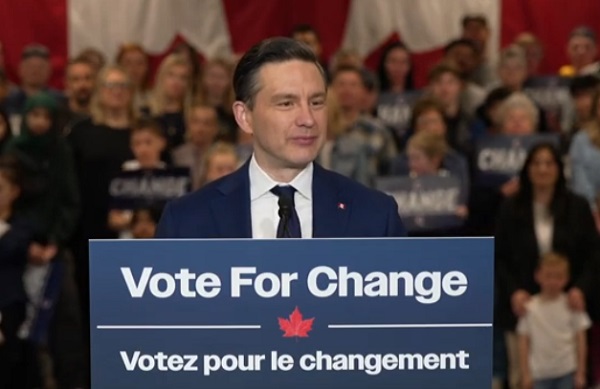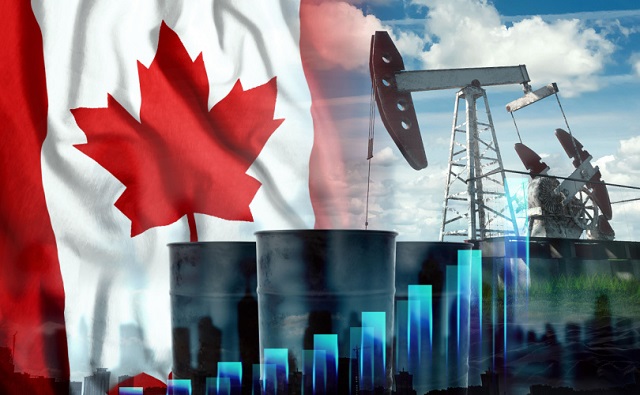Business
The debt silver bullet? Ending corporate welfare

From the Canadian Taxpayers Federation
By Jay Goldberg
Canadians are worried about government debt and axing corporate welfare is the closest thing to a silver bullet politicians have to solve the problem.
Canada’s politicians spent $89 billion handing out taxpayer cash to corporations in 2021, the last year for which figures are available, according to the Fraser Institute.
To get a handle on swelling government debt at both the federal and provincial levels, it’s time to put corporate welfare on the chopping block.
And those who think taxpayers don’t care about government debt are sorely mistaken.
A recent Leger poll shows 81 per cent of Ontarians are concerned about the debt dive the province has taken over the past decade.
No doubt Canadian taxpayers are just as alarmed about the doubling of Canada’s federal debt during Prime Minister Justin Trudeau’s nine years running Parliament Hill.
When an individual has a debt problem, the first step is to stop digging. The same is true of governments.
This year, just two of Canada’s 10 provinces are running balanced budgets. And Ottawa is nowhere close.
But look at the corporate welfare numbers and a path to solving Canada’s run-away government debt problem begins to emerge.
Take Ontario.
Ontario’s politicians have racked up $145 billion in new debt over the past decade, including more than $80 billion over the past six years under Premier Doug Ford.
Thanks to years of mismanagement, Ontario taxpayers will spend $13.9 billion on debt interest payments this year. That’s more than the province spends on post-secondary education.
And this year’s deficit is a whopping $9.8 billion.
Ontarians are concerned. And rightly so.
But take a quick gander at the Fraser Institute’s report and a path toward balance becomes clear.
The Ford government spent $22.1 billion in taxpayer handouts to corporations in 2021.
If this year’s handouts are even half of what they were in 2021, the Ford government could wipe out its deficit and produce a surplus by eliminating corporate welfare alone.
It’s unfair to place more and more debt at the feet of our children and grandchildren to give wealthy companies handouts.
It’s also unfair to pick winners and losers. The Ford government is taxing hardworking Ontarians, as well as small businesses, and handing billions over to wealthy corporations that don’t need taxpayer help.
Over the past few years, the Ford government has teamed up with the Trudeau Liberals to give billions to wealthy companies like Honda, Volkswagen, the Ford Motor Company, Stellantis, and many others.
Each year, Ottawa and Queen’s Park ran big deficits while handing out taxpayer cash to wealthy companies like candy. In many cases, taxpayers are paying millions of dollars for every job created.
Corporate welfare is fueling government debt. And it’s time for it to stop.
Not only is corporate welfare insanely costly, but it simply doesn’t work.
Between 2011 and 2021, the Ontario government spent $100 billion on corporate welfare. Yet inflation-adjusted economic growth in Ontario was below one per cent, on average, during that decade.
If handing out billions to create jobs and grow the economy worked, surely, we’d have the evidence by now.
Queen’s Park isn’t the only place where the budget could be turned around if corporate welfare were a thing of the past.
The Trudeau government also spent $47 billion on corporate welfare in 2021, which roughly equates to its budget deficit this year.
If 2024 corporate welfare numbers are in line with 2021, the Trudeau government could balance its budget in one fell swoop.
Taxpayers are rightly concerned about growing government debt across the country. Ending handouts to wealthy companies is an obvious solution to the debt binge.
After all, you cannot borrow and subsidize your way to prosperity.
Business
It Took Trump To Get Canada Serious About Free Trade With Itself

From the Frontier Centre for Public Policy
By Lee Harding
Trump’s protectionism has jolted Canada into finally beginning to tear down interprovincial trade barriers
The threat of Donald Trump’s tariffs and the potential collapse of North American free trade have prompted Canada to look inward. With international trade under pressure, the country is—at last—taking meaningful steps to improve trade within its borders.
Canada’s Constitution gives provinces control over many key economic levers. While Ottawa manages international trade, the provinces regulate licensing, certification and procurement rules. These fragmented regulations have long acted as internal trade barriers, forcing companies and professionals to navigate duplicate approval processes when operating across provincial lines.
These restrictions increase costs, delay projects and limit job opportunities for businesses and workers. For consumers, they mean higher prices and fewer choices. Economists estimate that these barriers hold back up to $200 billion of Canada’s economy annually, roughly eight per cent of the country’s GDP.
Ironically, it wasn’t until after Canada signed the North American Free Trade Agreement that it began to address domestic trade restrictions. In 1994, the first ministers signed the Agreement on Internal Trade (AIT), committing to equal treatment of bidders on provincial and municipal contracts. Subsequent regional agreements, such as Alberta and British Columbia’s Trade, Investment and Labour Mobility Agreement in 2007, and the New West Partnership that followed, expanded cooperation to include broader credential recognition and enforceable dispute resolution.
In 2017, the Canadian Free Trade Agreement (CFTA) replaced the AIT to streamline trade among provinces and territories. While more ambitious in scope, the CFTA’s effectiveness has been limited by a patchwork of exemptions and slow implementation.
Now, however, Trump’s protectionism has reignited momentum to fix the problem. In recent months, provincial and territorial labour market ministers met with their federal counterpart to strengthen the CFTA. Their goal: to remove longstanding barriers and unlock the full potential of Canada’s internal market.
According to a March 5 CFTA press release, five governments have agreed to eliminate 40 exemptions they previously claimed for themselves. A June 1 deadline has been set to produce an action plan for nationwide mutual recognition of professional credentials. Ministers are also working on the mutual recognition of consumer goods, excluding food, so that if a product is approved for sale in one province, it can be sold anywhere in Canada without added red tape.
Ontario Premier Doug Ford has signalled that his province won’t wait for consensus. Ontario is dropping all its CFTA exemptions, allowing medical professionals to begin practising while awaiting registration with provincial regulators.
Ontario has partnered with Nova Scotia and New Brunswick to implement mutual recognition of goods, services and registered workers. These provinces have also enabled direct-to-consumer alcohol sales, letting individuals purchase alcohol directly from producers for personal consumption.
A joint CFTA statement says other provinces intend to follow suit, except Prince Edward Island and Newfoundland and Labrador.
These developments are long overdue. Confederation happened more than 150 years ago, and prohibition ended more than a century ago, yet Canadians still face barriers when trying to buy a bottle of wine from another province or find work across a provincial line.
Perhaps now, Canada will finally become the economic union it was always meant to be. Few would thank Donald Trump, but without his tariffs, this renewed urgency to break down internal trade barriers might never have emerged.
Lee Harding is a research fellow with the Frontier Centre for Public Policy.
2025 Federal Election
Carney’s budget is worse than Trudeau’s

Liberal Leader Mark Carney is planning to borrow more money than former prime minister Justin Trudeau.
That’s an odd plan for a former banker because the federal government is already spending more on debt interest payments than it spends on health-care transfers to the provinces.
Let’s take a deeper look at Carney’s plan.
Carney says that his government would “spend less, invest more.”
At first glance, that might sound better than the previous decade of massive deficits and increasing debt, but does that sound like a real change?
Because if you open a thesaurus, you’ll find that “spend” and “invest” are synonyms, they mean the same thing.
And Carney’s platform shows it. Carney plans to increase government spending by $130 billion. He plans to increase the federal debt by $225 billion over the next four years. That’s about $100 billion more than Trudeau was planning borrow over the same period, according to the most recent Fall Economic Statement.
Carney is planning to waste $5.6 billion more on debt interest charges than Trudeau. Interest charges already cost taxpayers more than $1 billion per week.
The platform claims that Carney will run a budget surplus in 2028, but that’s nonsense. Because once you include the $48 billion of spending in Carney’s “capital” budget, the tiny surplus disappears, and taxpayers are stuck with more debt.
And that’s despite planning to take even more money from Canadians in years ahead. Carney’s platform shows that his carbon tariff, another carbon tax on Canadians, will cost taxpayers $500 million.
The bottom line is that government spending, no matter what pile it is put into, is just government spending. And when the government spends too much, that means it must borrow more money, and taxpayers have to pay the interest payments on that irresponsible borrowing.
Canadians don’t even believe that Carney can follow through on his watered-down plan. A majority of Canadians are skeptical that Carney will balance the operational budget in three years, according to Leger polling.
All Carney’s plan means for Canadians is more borrowing and higher debt. And taxpayers can’t afford anymore debt.
When the Liberals were first elected the debt was $616 billion. It’s projected to reach almost $1.3 trillion by the end of the year, that means the debt has more than doubled in the last decade.
Every single Canadian’s individual share of the federal debt averages about $30,000.
Interest charges on the debt are costing taxpayers $53.7 billion this year. That’s more than the government takes in GST from Canadians. That means every time you go to the grocery store, fill up your car with gas, or buy almost anything else, all that federal sales tax you pay isn’t being used for anything but paying for the government’s poor financial decisions.
Creative accounting is not the solution to get the government’s fiscal house in order. It’s spending cuts. And Carney even says this.
“The federal government has been spending too much,” said Carney. He then went on to acknowledge the huge spending growth of the government over the last decade and the ballooning of the federal bureaucracy. A serious plan to balance the budget and pay down debt includes cutting spending and slashing bureaucracy.
But the Conservatives aren’t off the hook here either. Conservative Leader Pierre Poilievre has said that he will balance the budget “as soon as possible,” but hasn’t told taxpayers when that is.
More debt today means higher taxes tomorrow. That’s because every dollar borrowed by the federal government must be paid back plus interest. Any party that says it wants to make life more affordable also needs a plan to start paying back the debt.
Taxpayers need a government that will commit to balancing the budget for real and start paying back debt, not one that is continuing to pile on debt and waste billions on interest charges.
-

 Automotive2 days ago
Automotive2 days agoHyundai moves SUV production to U.S.
-

 Entertainment2 days ago
Entertainment2 days agoPedro Pascal launches attack on J.K. Rowling over biological sex views
-

 2025 Federal Election1 day ago
2025 Federal Election1 day agoAs PM Poilievre would cancel summer holidays for MP’s so Ottawa can finally get back to work
-

 armed forces19 hours ago
armed forces19 hours agoYet another struggling soldier says Veteran Affairs Canada offered him euthanasia
-

 2025 Federal Election1 day ago
2025 Federal Election1 day agoPoilievre Campaigning To Build A Canadian Economic Fortress
-

 2025 Federal Election1 day ago
2025 Federal Election1 day agoThe Cost of Underselling Canadian Oil and Gas to the USA
-

 Automotive1 day ago
Automotive1 day agoCanadians’ Interest in Buying an EV Falls for Third Year in a Row
-

 conflict18 hours ago
conflict18 hours agoWhy are the globalists so opposed to Trump’s efforts to make peace in Ukraine?




